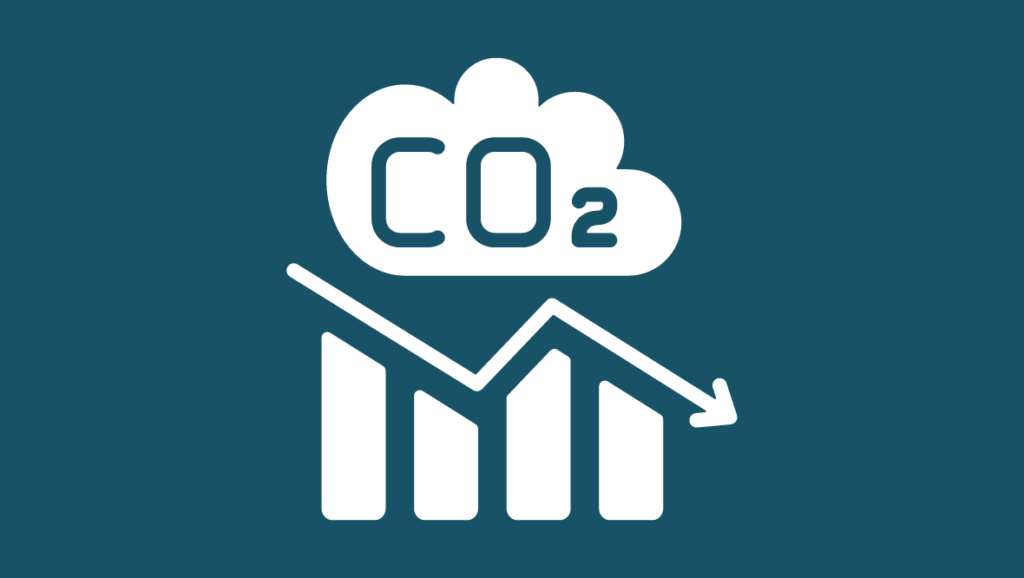ESG Essentials: Understanding Greenhouse Gas Emissions

Decipher one of ESG’s core components—GHG emissions, and learn about its pivotal role in defining a business’s environmental impact.
Greenhouse gas emissions, also called carbon footprint are a fundamental aspect of the overall sustainability performance of an organisation. Within the context of ESG (environmental, social, and governance) they fall under the environmental pillar.
As the global community grapples with the effects of climate change, the significance of mitigating GHG emissions has become paramount. The carbon footprint of a company directly influences its impact on the environment and, consequently, its social and economic standing.
High GHG emissions pose real risks: regulatory scrutiny, investor disengagement, and reputational damage. Conversely, transparent reporting and proactive reduction strategies unlock a world of benefits, not just for the environment, but for your company’s reputation, stakeholder engagement, and even financial resilience.
This article serves as a comprehensive guide to understanding GHG emissions within the context of ESG, with added insights on how to measure and report emissions as well as some strategies for reducing your company’s carbon footprint. From introducing key concepts to providing practical insights, the content is tailored to empower businesses to make informed decisions and strategize for transitioning towards a low-emissions future.
Want to know more about GHG Emissions And The 3 Scopes They Are Categorized Under? Click to check out our in-depth article on the topic.

GHG Emissions in the ESG Context
For companies, GHG emissions are the fundamental element of their environmental impact. Every stage of the business, from production to supply chain activities, contributes to this footprint. GHG emissions in the ESG context include the measurement and reporting of emissions of 7 gases: carbon dioxide (CO2), methane (CH4), nitrous oxide (N2O), hydrofluorocarbons (HFCs), perfluorocarbons (PCFs), sulphur hexafluoride (SF6) and nitrogen trifluoride (NF3).
For measurement purposes GHG emissions are categorized into three scopes:
- Scope 1 includes direct emissions from owned or controlled sources, such as onsite combustion of fossil fuels and vehicle fleets.
- Scope 2 encompasses indirect emissions resulting from purchased electricity, heating, or cooling. It reflects a company’s influence over its energy consumption but from sources ( energy-producing facilities) that it doesn’t own or control.
- Scope 3 involves indirect emissions from sources not owned or controlled by the company but related to its activities, like supply chain operations, business travel, and product use.
While Scopes 1 and 2 are considered more within a company’s direct control, Scope 3 emissions often involve collaboration and coordination with external entities, making them crucial for a comprehensive understanding of a company’s carbon footprint.
Reducing corporate emissions creates further opportunities for companies, e.g., increased competitivity by adapting to consumer preferences (CDP, 2019). Additionally, by reducing the energy demand in companies and, especially, in production, costs can be cut, efficiency increased, and emissions reduced.
Measures to reduce corporate GHG emissions: A review-based taxonomy and survey-based cluster analysis of their application and perceived effectiveness. As published in ScienceDirect.
For businesses, accurately calculating GHG emissions is a proactive step toward making their ESG data available and therefore attracting investment. According to McKinsey ‘Global sustainable investment now (2019) tops $30 trillion—up 68 percent since 2014 and tenfold since 2004.’ Companies that demonstrate a commitment to measuring, managing, and reducing their carbon footprint are more likely to attract environmentally conscious investors. Moreover, as the importance of ESG factors continues to grow in investment decisions, robust GHG calculations become a valuable tool for businesses seeking financial support from investors who prioritize sustainability and responsible business practices.

Measuring GHG Emissions
Measuring Greenhouse Gas (GHG) emissions involves quantifying the amount of GHGs released into the atmosphere as a result of operations directly or indirectly owned or controlled by the company. A GHG inventory helps businesses understand their carbon footprint and enables informed, strategic efforts to reduce environmental impact.
The measurement process typically includes identifying emission sources, collecting relevant data, and applying emission factors or conversion coefficients to estimate the amount of GHGs produced. This information is then converted into carbon dioxide equivalents (CO2e) to provide a standardized metric for comparability purposes.
Resources for Measuring GHG Emisisons
When it comes to measuring emissions, businesses can leverage widely recognized frameworks and standards to ensure accuracy and consistency in their assessments.
- The GHG Protocol, developed by the World Resources Institute (WRI) and the World Business Council for Sustainable Development (WBCSD), is a comprehensive resource that provides a globally accepted methodology for quantifying and managing greenhouse gas emissions. It offers standards and guidelines and calculation methodologies, aiding businesses in reporting emissions transparently and aligning with international reporting requirements.
- ISO 14064-1 is another invaluable resource for businesses committed to effective emission measurement. This standard, developed by the International Organization for Standardization (ISO), addresses the ‘quantification and reporting of greenhouse gas emissions and removals’. ISO 14064-1 outlines principles and requirements for the design, development, management, reporting, and verification of an organization’s greenhouse gas inventory.

Reporting and Transparency
Effective reporting not only communicates a core metric of a business’s environmental impact but also demonstrates transparency. Transparent reporting involves documenting emissions across all scopes, providing a comprehensive view of the organization’s carbon footprint, with disclosures on methodology that was used to calculate the emissions.
Additionally, emissions disclosures can extend beyond the quantitative aspect to include qualitative information, such as emission reduction initiatives, strategies for sustainable practices, and long-term environmental goals. This not only informs stakeholders but also invites scrutiny, enabling businesses to evolve and adapt in response to feedback.
Companies often use platforms like sustainability reports, where GHG emissions data is presented in a structured and accessible format. This documentation adheres to established frameworks such as GRl, ensuring consistency and comparability.
*For reporting resources please refer to the resources provided in the subheading above: Resources for Measuring GHG Emisisons as the same standards provide detailed guidelines on how to report GHG emissions.

Strategies for Reducing GHG Emissions
Understanding your GHG footprint is crucial, but action is what truly drives change. Here are three key strategies, each targeting different emission scopes, to help you significantly reduce your company’s GHG impact:
One key strategy is the adoption of renewable energy sources. Shifting energy consumption from fossil fuels to renewable sources such as solar, wind, or hydropower can significantly reduce a company’s GHG emissions. This not only aligns with sustainable practices but also positions the business as a leader in clean energy adoption.
Another impactful strategy involves optimizing operational efficiency. By enhancing energy efficiency in manufacturing processes, supply chain management, and daily operations, companies can achieve substantial reductions in GHG emissions. This might include upgrading equipment, improving logistics to minimize transportation-related emissions, and implementing waste reduction measures.
Additionally, adopting sustainable supply chain practices can have a big impact on reducing Scope 3 emissions. Companies can work closely with suppliers to ensure environmentally responsible sourcing, manufacturing, and distribution processes.


